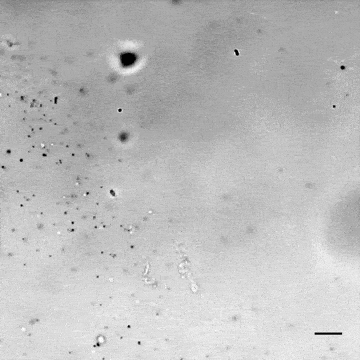
12th November 2018 Nanobots propelled through eye tissue For the first time, scientists have developed nano-scale vehicles that can move through dense tissue like the vitreous humour of the eye. The researchers, led by the "Micro, Nano and Molecular Systems" Lab at the Max-Planck-Institute in Stuttgart, Germany, designed helical-shaped devices resembling tiny corkscrews. Tens of thousands of these tiny machines – smaller than bacteria – were then injected into a pig's eye. A combination of the bots' magnetic material and two layers of a non-stick substance made it possible to guide them, with magnetic fields, in a highly targeted and precise way. Importantly, this was achieved without damaging the sensitive biological tissue around them. Until now, the viscous consistency of eye tissue had been too challenging for nanomachines like this, but the miniature propellers developed here were able to move relatively unhindered. The swarm also reached the retina in less than 30 minutes, about 10 times faster than letting similar-sized drug particles diffuse through the eye.
"For the coating, we looked to nature for inspiration", explains Zhiguang Wuw, now a postdoc at the California Institute of Technology. "We applied a liquid layer found on the carnivorous pitcher plant, which has a slippery surface on the peristome to catch insects. It is like the Teflon coating of a frying pan. This slippery coating is crucial for the efficient propulsion of our robots inside the eye, as it minimises the adhesion between the biological protein network in the vitreous and the surface of our nanorobots." "The principle of the propulsion of the nanorobots, their small size, as well as the slippery coating, will be useful, not only in the eye, but for the penetration of a variety of tissues in the human body," says Tian Qiu, one of the corresponding authors of the paper, which appears in the journal Science. The next step will be to test the spiral-shaped bots in a living animal's eye, followed by clinical trials in human patients. The team will also need to develop an easier-to-dissolve material for the bots, which are currently made with nickel. If that can be achieved, it could lead to improved treatments for a whole range of eye conditions, while paving the way for similar methods in other parts of the body.
Comments »
If you enjoyed this article, please consider sharing it:
|







